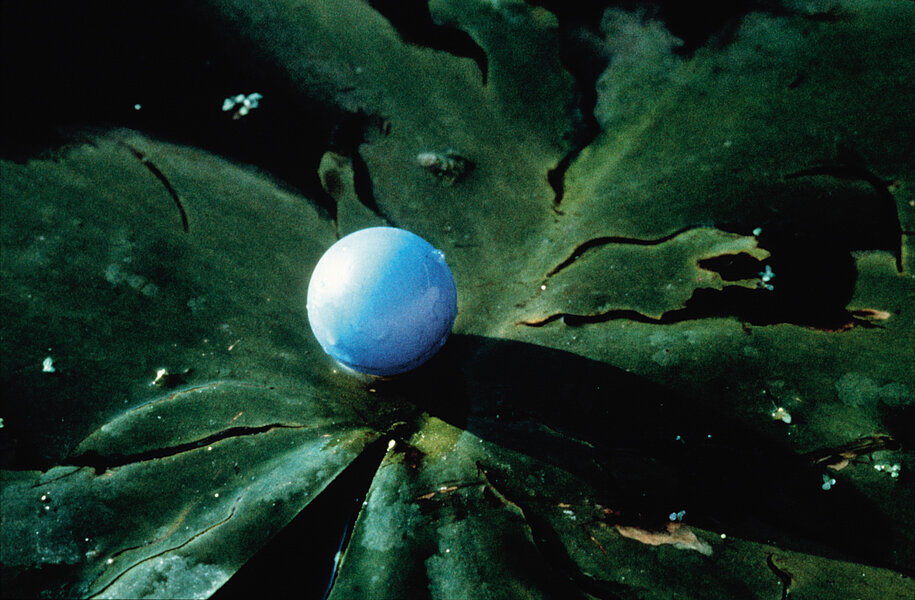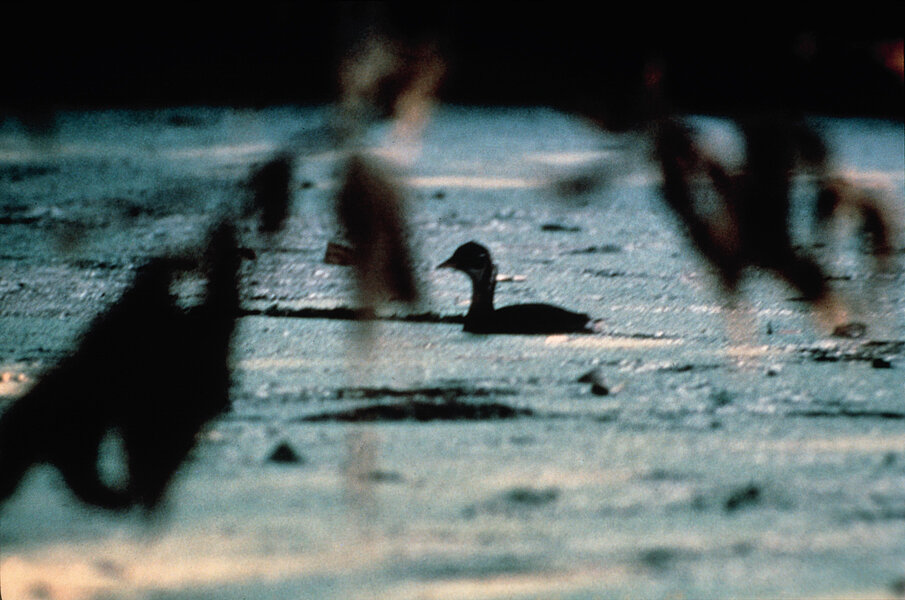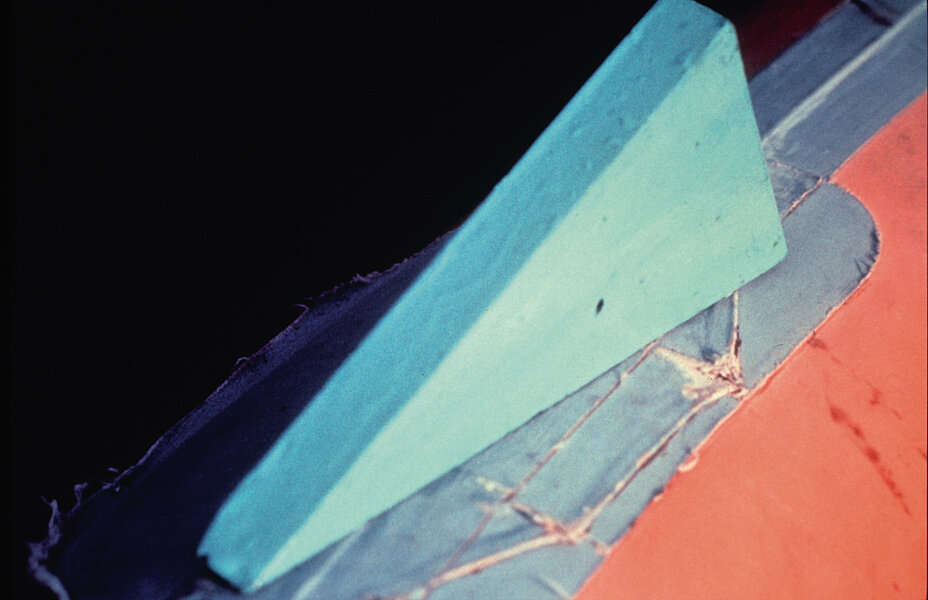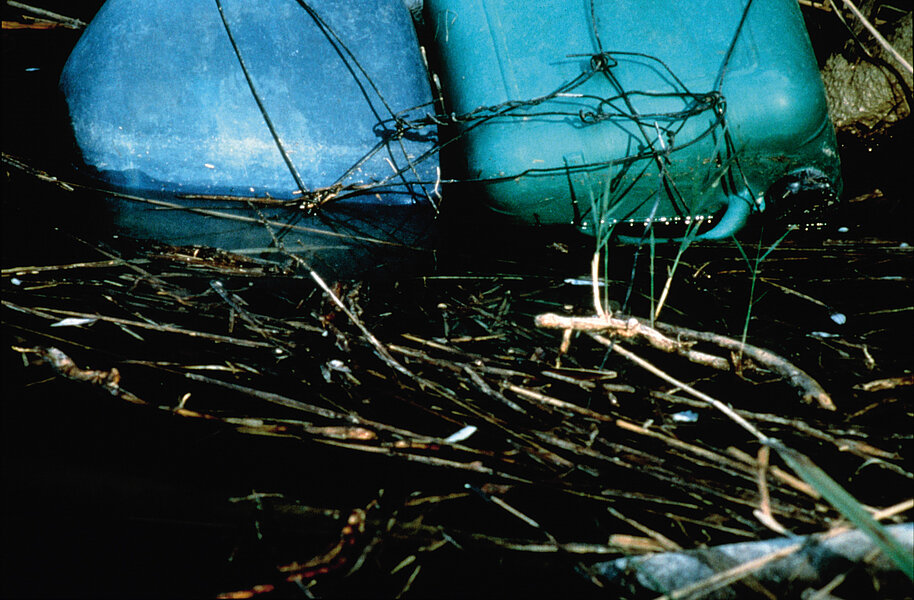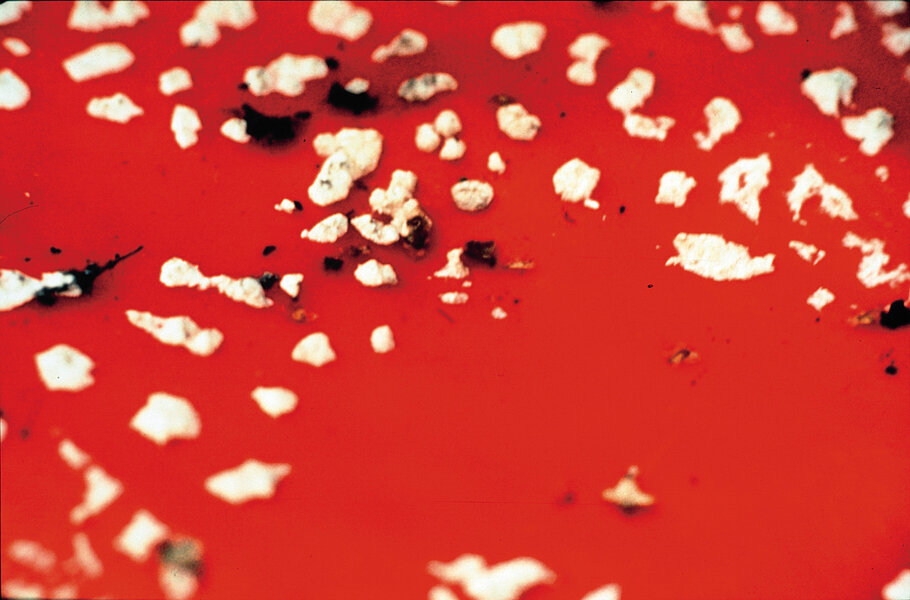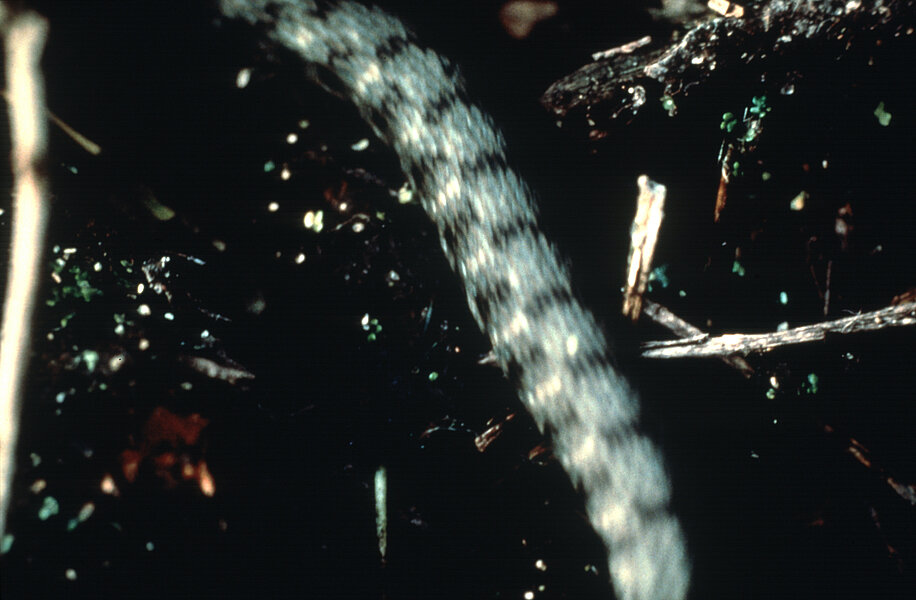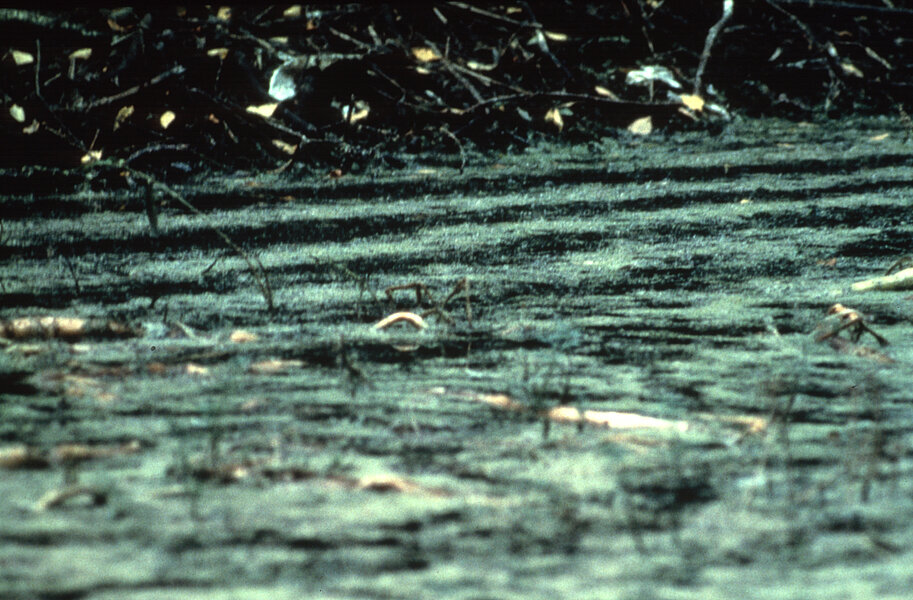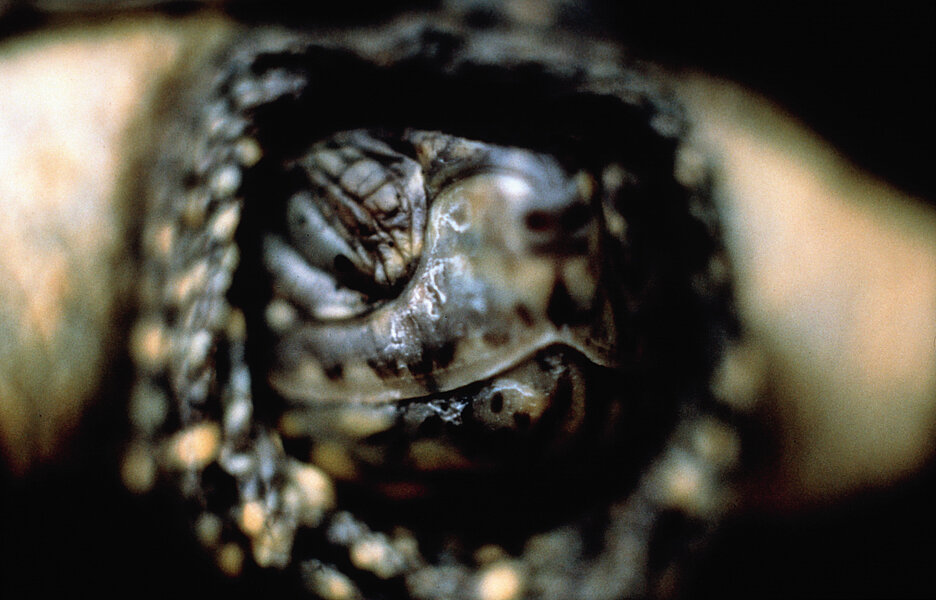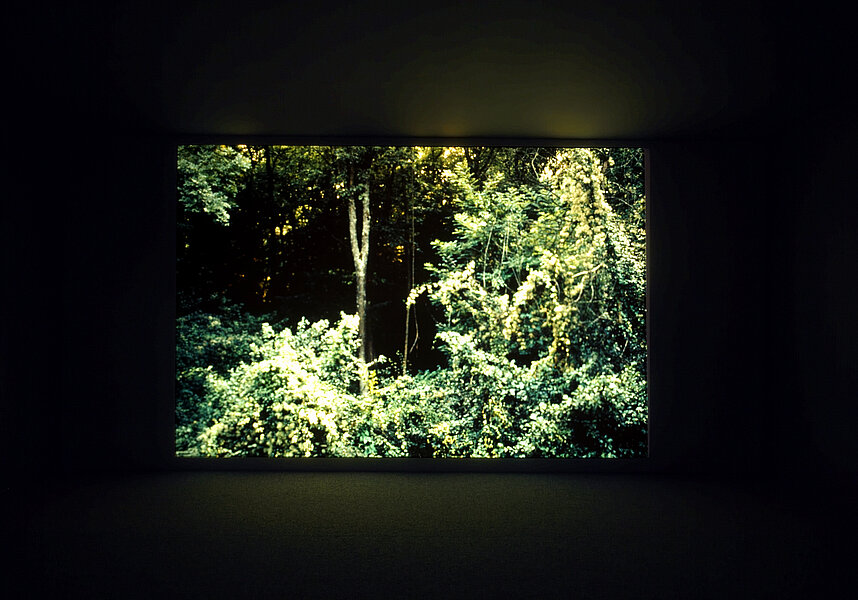
Baumgarten, Lothar
Da gefällt's mir besser als in Westfalen, El Dorado
I Like it Here Better Than in Westphalia, El Dorado
1968 - 1976
| Object description | Slide installation: 35mm slides, synchronized audio narration |
|---|---|
| Material |
slides:
polyester (fiber),
Emulsion
Dias:
plastic
|
| Technique |
Object:
installation
slides:
photographic processes
|
| Year of acquisition | 2004 |
| Inventory number | ÖL-Stg 409/0 |
| Creditline | mumok - Museum moderner Kunst Stiftung Ludwig Wien, Leihgabe der Österreichischen Ludwig-Stiftung |
| Rights reference | Bildrecht, Wien |
| Further information about the person | Baumgarten, Lothar [ULAN] |
| Literature |
Why picture now/Fotografie, Film, Video, heute Bilder-Plural.Multiple Bildformen in der Fotografie |
In his slide installation in a mysterious dark room Lothar Baumgarten seems to be taking us into an idyllic natural scene. We can see trees, birds, rain puddles, frogs, and many other natural phenomena. The soundtrack adds the twittering of birds, leaves rustling, and the sound of splashing water. But this first impression is deceptive. In the middle of all this plush greenery and what seems to be untouched nature, we again and again see strange colorful objects, moments of civilization, trash and other half rotted objects. The noise of aircraft is heard above the sounds of nature. In this scenario, the borders between the natural and the artificial are blurred. The presentation of nature ultimately turns out to be constructed. In fact we are in a secluded and dirty place somewhere between the cities of Düsseldorf and Cologne. As soon as we have seen through Baumgarten‘s installation, all the magic falls away. We no longer witness the “purity” of untainted nature. Rather we see this enchanted space for what it really is: contaminated ground. The title, I Like It Better There than in Westphalia – El Dorado, is a reference to a literary model – Voltaire’s novella Candide of 1759. In this story the young hero gets to the mythical place called El Dorado, where everything is made of gold and where tolerance, affluence, and peace have all been realized. Richly laden with treasures, Candide leaves El Dorado, but only to see that the world outside is full of envy and discord and that greed and animosity are the driving forces of human life. The idyll can only live in the imagination, in the myth. In reality, Candide accepts by the end, we have to find a way of managing the banalities of everyday life. With this, Baumgarten’s installation perhaps leaves us a little disillusioned.
© mumok – museum moderner kunst stiftung ludwig wien


